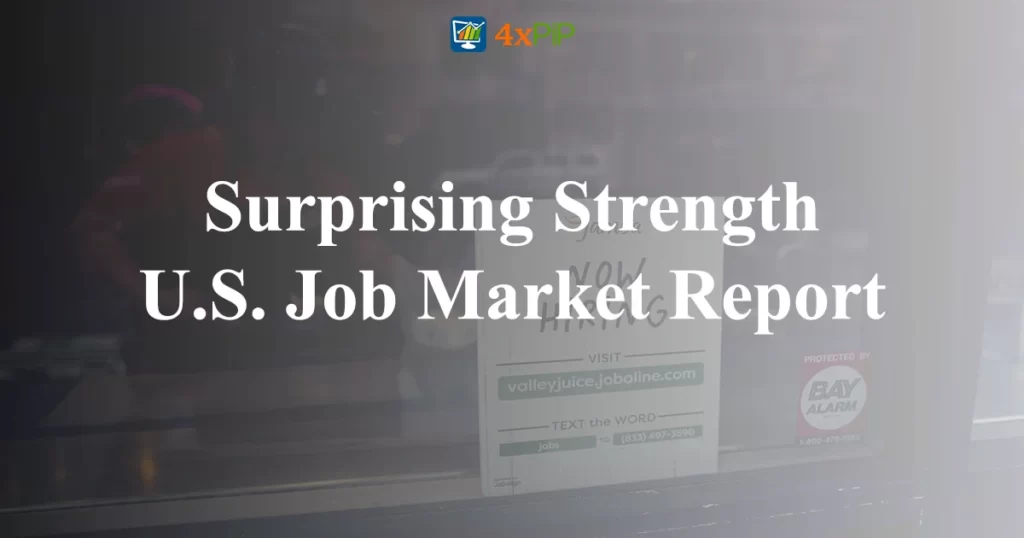The U.S. labor market ended 2023 on a high note, surpassing expectations with a robust addition of 216,000 jobs in December. The unemployment rate held steady at 3.7%, defying projections of a rise to 3.8%.
Employers, particularly in government and healthcare sectors, led the hiring surge with 52,000 and 38,000 new positions, respectively. Other contributors included leisure and hospitality (40,000), social assistance (21,000), and construction (17,000). However, transportation and warehousing experienced a loss of 23,000 jobs.
Despite concerns of economic slowdown, the job market resilience challenges this narrative. The report also revealed an increase in the broader unemployment rate to 7.1%, considering discouraged workers and part-timers. The labor force participation rate dropped to 62.5%, the lowest since February.
In terms of monetary policy, the report’s impact on Fed expectations was evident. Average hourly earnings rose by 0.4%, surpassing estimates at 4.1% annually, possibly influencing a shift in market sentiment about potential rate cuts. Fed funds futures markets adjusted expectations, lowering March rate cut odds to 56%.
However, the report suggested persistent inflationary pressures, with earnings exceeding estimates. The average workweek decreased slightly to 34.3 hours. Economists, like Andrew Patterson from Vanguard, noted the uncertainty ahead for the Fed’s journey back to a 2% inflation target.
This report reinforces the idea that the U.S. economy is resilient, countering expectations of a slowdown. Despite 11 interest rate hikes since March 2022, the most aggressive in four decades, the economy continues to perform. Some anticipate up to six rate cuts, but the job market’s strength challenges this narrative.
The market’s expectation of a softer Fed may be premature, as the report signals ongoing economic strength. Despite inflation remaining above the 2% target, the belief that inflation will recede could be challenged. Seema Shah from Principal Asset Management emphasized the recent labor market data points to strength.
The U.S. economic growth has been robust, with GDP expected to increase at a 2.5% annualized pace in the fourth quarter. Consumer resilience is evident in holiday spending projections, reaching a record $222.1 billion, a 5% increase.
Conclusion:
The December jobs report underscores the resilience of the U.S. economy, challenging expectations of a slowdown. The impact on Fed policy and inflationary pressures remains uncertain, adding complexity to the economic outlook.
FAQs:
What does the December jobs report reveal about the U.S. labor market?
The report exceeds expectations, adding 216,000 jobs, maintaining a 3.7% unemployment rate, and showcasing resilience.
Which sectors contributed significantly to the hiring surge in December?
Government jobs and healthcare led, with 52,000 and 38,000 new positions, respectively, indicating diverse growth areas.
How did the job market impact expectations for Federal Reserve actions?
Average hourly earnings rose by 0.4%, influencing a shift in market sentiment and lowering March rate cut odds.
What challenges and uncertainties does the report pose for the U.S. economy?
Despite ongoing strength, inflationary pressures persist, earnings exceed estimates, and the Fed’s path remains uncertain.












